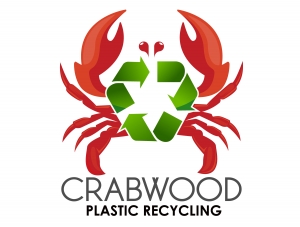What is CrabWood ?
CrabWood is a New Zealand owned brand composite product produced from a combination of wood waste and waste Plastic Crabwood products contain no formaldehydes.
Where is CrabWood made ?
It’s a New Zealand Product . Production done overseas in India and China.
Is CrabWood moisture resistant ?
CrabWood is resistant to moisture with little or no water absorption.
Does CrabWood need ventilation ?
Yes, like timber, it is important to provide adequate ventilation to ensure CrabWood is able to dry out after being wet. Check product fixing instructions for information on ventilation requirements. Boxing in the deck will reduce cross flow ventilation and therefore must be avoided.
Does Crabwood expand and contract ?
It is necessary to allow a 6 mm gap between boards to allow expansion / Contraction during summer and winter months especially on butt joins (end to end), Spacing between boards (side by side), are in place as our slide in inserts maintain gap positions when installed.
Will it warp ?
CrabWood decking will not warp provided it is used and fixed in accordance with manufacturers fixing instructions.
Does it splinter ?
The composition of CrabWood products means that they will not splinter. This makes them ideal for small children.
How do I fix CrabWood ?
CrabWood decking fixing is similar to natural timber, with a few subtle differences that must be observed. Please check our installation leaflet.
Does CrabWood fade ?
No. CrabWood has a U.V. tolerance additive which allows it to withstand the strength of the sun but does soften in colour initially within the first 2-3 months and then stabilise .
How does CrabWood compare with timber in terms of surface temperature ?
Tests have shown CrabWood has a similar surface temperature to timber . Lighter the colour it helps lower temperatures whilst the darker colours do tend to get hot under foot, (similar to a dark painted timber decking board).
Can CrabWood be used for joists?
No, Not yet, but we are in the R&D process of creating joists that can be used for underfloor and roof struts in the future .
Is joist size important ?
Yes, joists have to be 50 x 100 mm ( Aluminium ) or 50 x 150 mm ( Timber ) .
When butt joining decking boards dual joists need to be laid . to enable the fixings to be located a minimum 15 mm from the end of the board.
What are the finishes for decking ?
CrabWood generally comes in smooth ,brushed or grooved options to suit the clients requirement.
Is it scratch resistant?
No – CrabWood can show scuffs and scratches, if left unfinished. especially on the “smooth surface”. By applying 2 coats of FX Poxy on decking the surface will be hard and scratchproof.
Exposure to sunlight, especially U V rays the deck does not yellow or show any sign of fading. It would be advisable that all furniture on a CrabWood deck have protective feet eg.: rubber stoppers applied to the legs to help prevent scuffing or scratching of the deck surface.
Please note, : CrabWood is a finished product-take care !
Is CrabWood slippery ?
CrabWood decking has a smooth and grooved surface finish. Though it has a slip resistant finish it is advisable to be careful when the deck surface is wet to avoid accidents and children being hurt.
Is CrabWood suitable for use around swimming pools ?
Yes – CrabWood is an ideal decking to be used in a pool and spa environment. there is no likelihood of splinters occurring, it protects your feet.
Can CrabWood be used by the sea ?
CrabWood is ideal in a marine environment, being unaffected by the salt air or sea water sprays.
How can I clean and maintain CrabWood ?
CrabWood is relatively maintenance free, however, regular cleaning will keep the deck looking great. You can use high pressure cleaners on CrabWood. Please ensure you angle the spray and not position the nozzle directly straight to the surface. This helps not to damage the grain on the surface . Just sweeping and cleaning with normal household cleaners is usually adequate to keep your deck looking great. “Sugar soap”, mixed with water works particularly well. Stubborn (usually oil-based) stains can be difficult to remove – we find that water-diluted degreaser works well – scrub in and wash off after a few minutes.
Periodic cleaning of expansion joints is also recommended.
Tests have shown that it is possible to remove graffiti paint by using paint stripper.
Use strong chemicals with caution.
Can I paint or stain my CrabWood ?
CrabWood products can be painted ,stained or varnished. Preferably use oil or acrylic /solvent based products!
Oiling — Sealeys Timber & Decking Oil or Cabbotts Traditional Timber Oil, will give a good result.
Painting — Before painting CrabWood decking does not need surface sealing but it would be good to prime the surface before painting. .
Can water stain marks appear on Crabwood ?
Yes, water stain marks can show on CrabWood boards if left unchecked over a long period due to the salts and calcium in the water. Water stains from water pooling or dripping can happen with CrabWood just like it can with many other materials/ surfaces such as timber flooring, glass, laminated surfaces. They can be cleaned fairly quickly with a high pressure washer. Please ensure you angle the spray and not position the nozzle directly straight to the surface. This helps not to damage the surface.
Is CrabWood mould resistant ?
Yes . Crabwood is mould resistant.
What joist span do I use?
CrabWood decking needs a maximum of 400 mm joist span width.
Does CrabWood specify a bigger side by side gap than timber ?
No. CrabWood is laid as per manufacturers specifications . Provided you use the plastic slip and grip clips in between two deck planks expansion or contraction does not affect the installed deck .
What are the standard colours ?
CrabWood comes in a range of colours for residential and commercial applications. Check our web site for more details. Please note colours may have a slight shade variation from batch to batch, however different batches of the same colour will vary to within a commercially acceptable tolerance.
Can I use CrabWood for screening ?
CrabWood has a specific product (70 x 12 mm) for use as screening.. Check fixing instructions for details.
Are there special tools required for working with CrabWood ?
With CrabWood you can use manual saws and tools or standard power saws and drills. As with using any power tools, Please use adequate personal protective equipment when cutting or drilling CrabWood.
CrabWood “sawdust”, is coarse, heavy sawdust that doesn’t tend to “ Float ” in the air. This makes it safe for handling.
How should CrabWood be stored and handled ?
Whether at the timber merchant premises or at your own house awaiting installation, CrabWood should be stored on its edge in a dry, flat area under roof and off the ground. Failure to keep packs dry in storage can cause problems and dampness creep in .
How do you move Crabwood around the site
When moving product around, CrabWood should be carried on its edge. CrabWood is a finished product.


